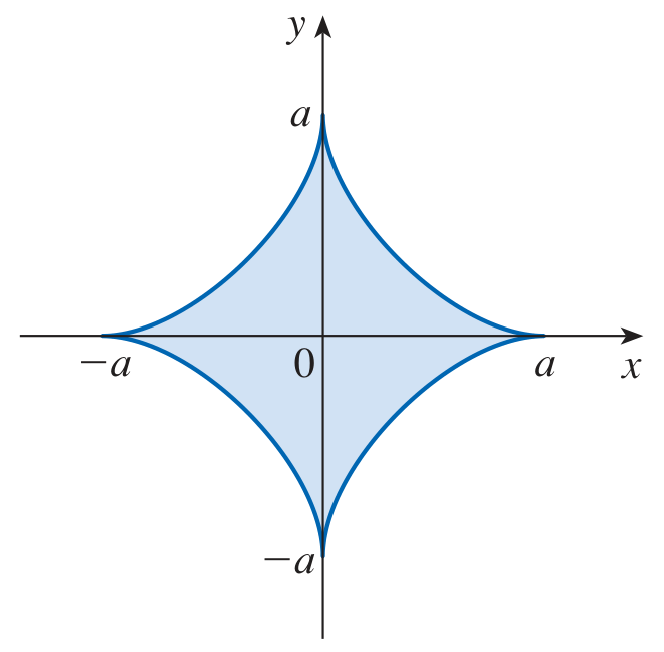Tangent to a cycloid
Find the tangent line (described parametrically) to the cycloid
Solution
(1) Compute
Find
(2) Plug in
(3) Apply formula:
Calculate
So:
This is the slope
(4) Need the point
Plug
(5) Point-slope formulation of tangent line:
Inserting data:
Vertical and horizontal tangents of the circle
Consider the circle parametrized by
Solution
(1) For the points with vertical tangent line, we find where the moving point has
The moving point is at
(2) For the points with horizontal tangent line, we find where the moving point has
The moving point is at
Finding the point with specified slope
Consider the parametric curve given by
Solution
(1) Compute the derivatives:
Therefore the slope of the tangent line, in terms of
(2) Set up equation:
(3) Find the point:
Perimeter of a circle
(1) The perimeter of the circle
(2) Integrate around the circle:
Perimeter of an asteroid
Find the perimeter length of the ‘asteroid’ given parametrically by

Solution
(1) Notice: Throughout this problem we use the parameter
Compute the derivatives in
(2) Compute the infinitesimal arc element.
Plug into the arc element, simplify:
(3) Bounds of integration?
Easiest to use
On the interval
Absolute values matter!
If we tried to integrate on the whole range
, then really does change sign. To perform integration properly with these absolute values, we’d need to convert to a piecewise function by adding appropriate minus signs.
(4) Integrate the arc element:
Finally, multiply by 4 to get the total perimeter:
Speed, distance, displacement
The parametric curve
Suppose the particle travels for
Solution
(a)
Compute derivatives:
Now compute the speed:
(b)
Distance traveled by using speed.
Compute total distance traveled function:
Substitute
The distance traveled up to
(c)
Displacement formula:
Now compute starting and ending points.
For starting point, insert
For ending point, insert
Insert
Surface of revolution - parametric circle
By revolving the unit upper semicircle about the
Parametrization of the unit upper semicircle:
Therefore, the arc element:
Now for
Plugging all this into the integral formula and evaluating gives:
Notice: This method is a little easier than the method using the graph
Surface of revolution - parametric curve
Set up the integral which computes the surface area of the surface generated by revolving about the
Solution
For revolution about the
Then compute
Therefore the desired integral is: